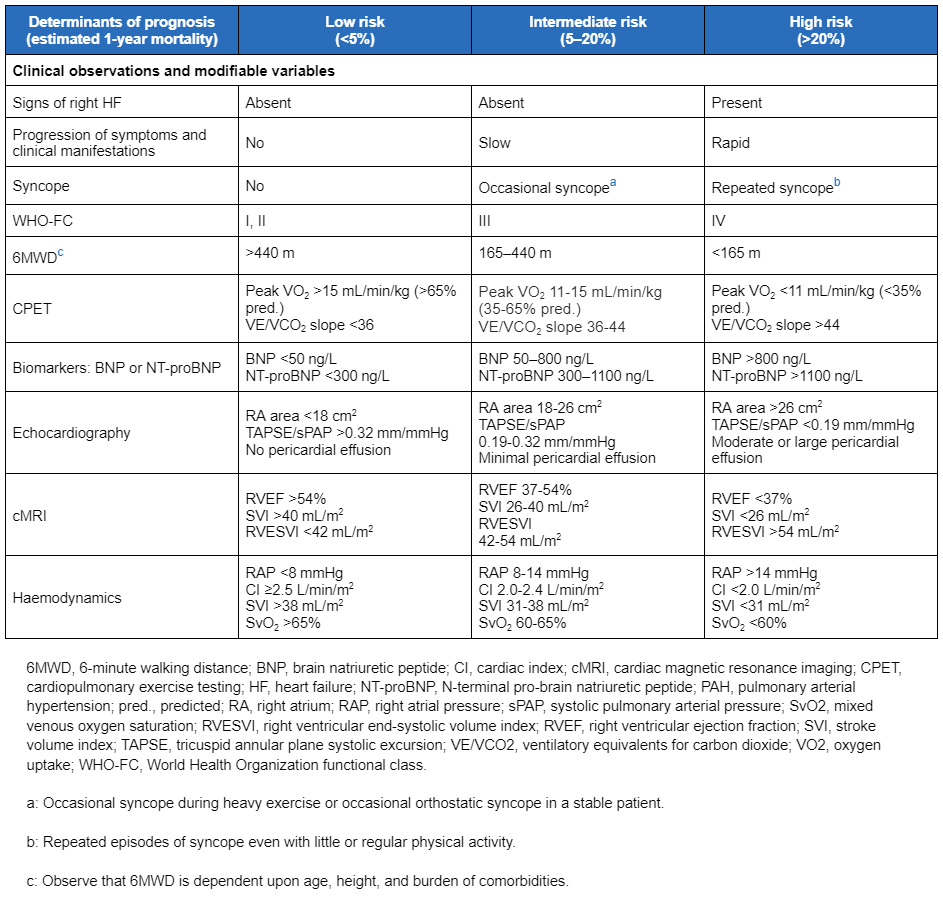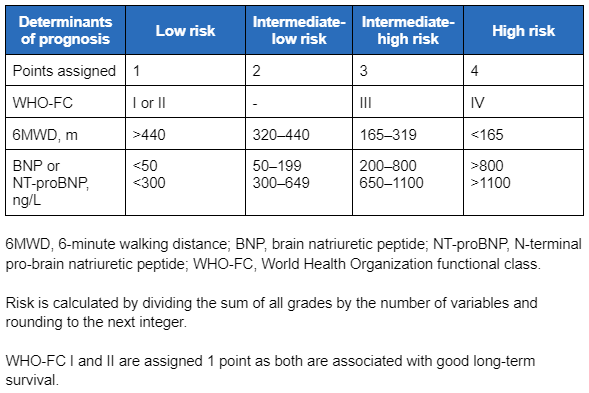Criteria
New York Heart Association (NYHA)/World Health Organization (WHO) classification of functional status of patients with pulmonary hypertension[53]
Functional class I: patients with pulmonary hypertension in whom there is no limitation of usual physical activity; ordinary physical activity does not cause increased dyspnoea, fatigue, chest pain, or pre-syncope.
Functional class II: patients with pulmonary hypertension who have mild limitation of physical activity. There is no discomfort at rest, but normal physical activity causes increased dyspnoea, fatigue, chest pain, or pre-syncope.
Functional class III: patients with pulmonary hypertension who have a marked limitation of physical activity. There is no discomfort at rest, but less than ordinary activity causes increased dyspnoea, fatigue, chest pain, or pre-syncope.
Functional class IV: patients with pulmonary hypertension who are unable to perform any physical activity and who may have signs of right ventricular failure at rest. Dyspnoea and/or fatigue may be present at rest, and symptoms are increased by almost any physical activity.
Risk assessment in pulmonary arterial hypertension[3]
The European Society of Cardiology(ESC)/European Respiratory Society(ERS) guidelines highlight a combination of clinical, functional, and haemodynamic measures as a tool to stratify risk of mortality at 1 year.[3]
The ESC/ERS guidelines recommend a three-strata model for risk assessment at the time of diagnosis, using categories of low, intermediate, and high risk of mortality at 1 year. This is used to assess survival and guide management.[3][54]
[Figure caption and citation for the preceding image starts]: Comprehensive risk assessment in pulmonary arterial hypertension (three-strata model)European Heart Journal. 2022 Oct 7;43(38):3618-731; used with permission [Citation ends].
During monitoring and follow-up after initial therapy, the ESC/ERS guidelines recommend a four-strata model, which uses categories of low, intermediate-low, intermediate-high, and high risk to guide treatment decisions.[3]
[Figure caption and citation for the preceding image starts]: Variables used to calculate the simplified four-strata risk-assessment toolEuropean Heart Journal. 2022 Oct 7;43(38):3618-731; used with permission [Citation ends].
Use of this content is subject to our disclaimer